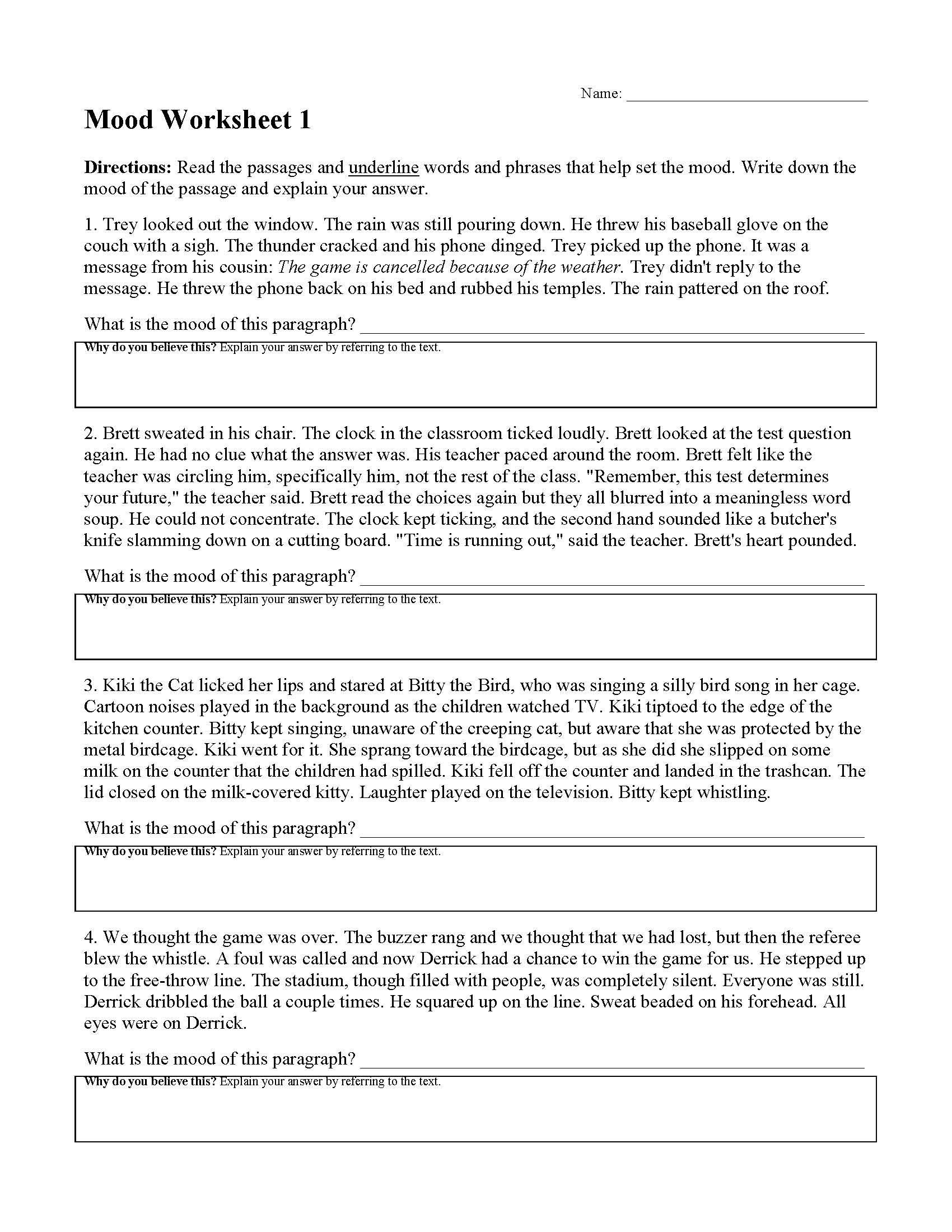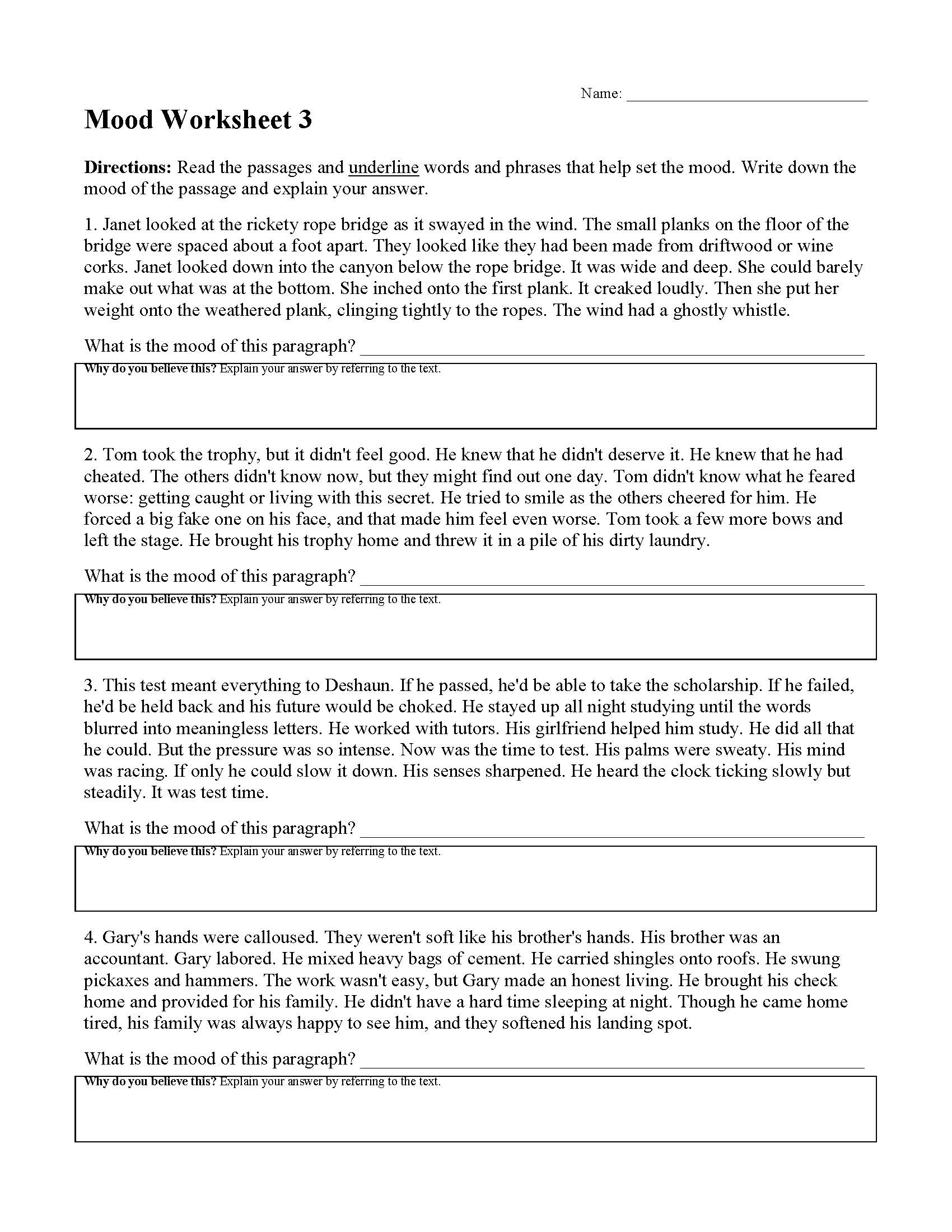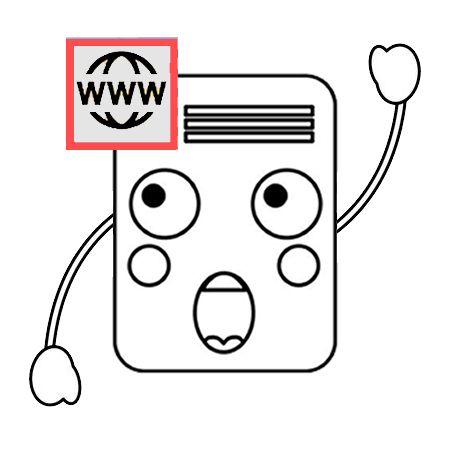Mood Worksheets
Students often confuse tone with mood. These are very similar reading skills, but they are not the same. Tone is the author's attitude toward his or her subject. Mood is the feeling that the author is trying to create in the mind of readers. Both tone and mood deal with feelings and attitudes. Tone is concerned with the narrator's feelings. Mood is about how the reader is supposed to be feeling. I say "supposed to" because an author can never be certain of how their readers will respond. Nonetheless, the mood is about how the reader is supposed to feel.
This page contains some mood worksheets that I wrote to help students practice identifying mood. I also made some tone worksheets that can be found here. Each worksheets contains 9 or 10 problems. Students read the short texts and determine what mood the author is trying to create. They underline words and phrases from the passage that support their argument. They also explain their answers. I'm sure that these worksheets will be enough to help your students master mood. Let me know if they help. I love comments and feedback. Even the nasty stuff makes me laugh sometimes. Thanks for visiting!



That's all the mood resources that I have right now. Eventually, I'd like to create and post a PowerPoint slideshow, a video, and maybe some activities. All that sounds like pie in the sky right now though. I hope that the mood worksheets and online activities that I do have prove to be useful to you and your students. Thanks for visiting!
Mood
Common Core State Standards
RL.K.1 - With prompting and support, ask and answer questions about key details in a text.
RL.1.1 - Ask and answer questions about key details in a text.
RL.2.1 - Ask and answer such questions as who, what, where, when, why, and how to demonstrate understanding of key details in a text.
RL.3.1 - Ask and answer questions to demonstrate understanding of a text, referring explicitly to the text as the basis for the answers.
RL.4.1 - Refer to details and examples in a text when explaining what the text says explicitly and when drawing inferences from the text.
RL.5.1 - Quote accurately from a text when explaining what the text says explicitly and when drawing inferences from the text.
RL.6.1 - Cite textual evidence to support analysis of what the text says explicitly as well as inferences drawn from the text.
RL.7.1 - Cite several pieces of textual evidence to support analysis of what the text says explicitly as well as inferences drawn from the text.
RL.8.1 - Cite the textual evidence that most strongly supports an analysis of what the text says explicitly as well as inferences drawn from the text.
RL.9-10.1 - Cite strong and thorough textual evidence to support analysis of what the text says explicitly as well as inferences drawn from the text.
RL.11-12.1 - Cite strong and thorough textual evidence to support analysis of what the text says explicitly as well as inferences drawn from the text, including determining where the text leaves matters uncertain.
Search here.
2 Comments
Leave a Reply
- Author's Purpose Worksheets
- Characterization Worksheets
- Conflict Worksheets
- Fact and Opinion Worksheets
- Figurative Language Activities
- Figurative Language Poems with Questions
- Genre Activities
- Irony Worksheets
- Making Predictions
- Mood Worksheets
- Nonfiction Passages and Functional Texts
- Parts of Speech Worksheets
- Poetic Devices
- Point of View Worksheets
- School Project Ideas
- Setting Worksheets
- Simile and Metaphor Worksheets
- Story Structure Worksheets
- Text Structure Worksheets
- Theme Worksheets
- Tone Worksheets
- ALL PAGES AND WORKSHEETS






talaysia
/ December 4, 2023I helped my sister
Lee
/ April 17, 2023Do you have a lesson for mood?